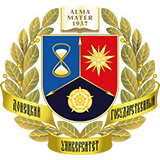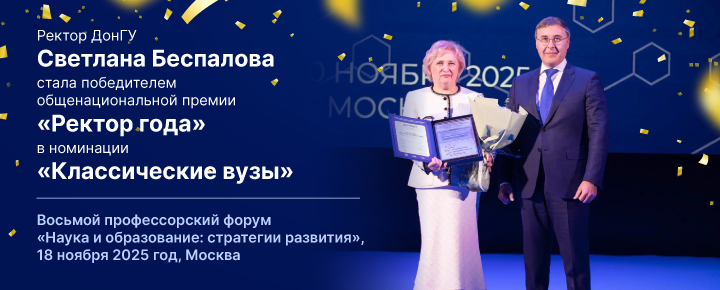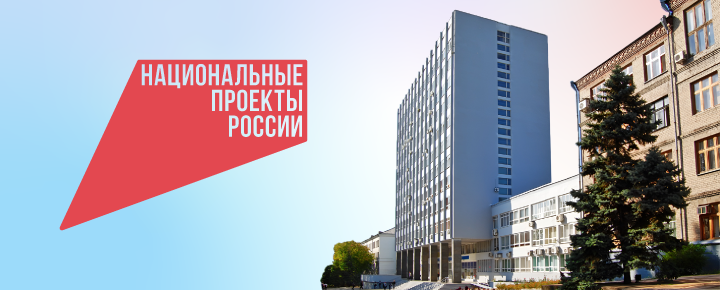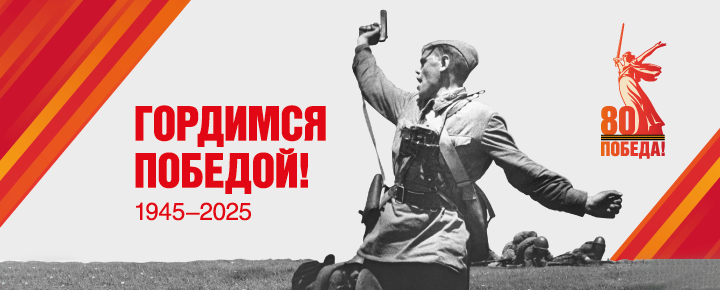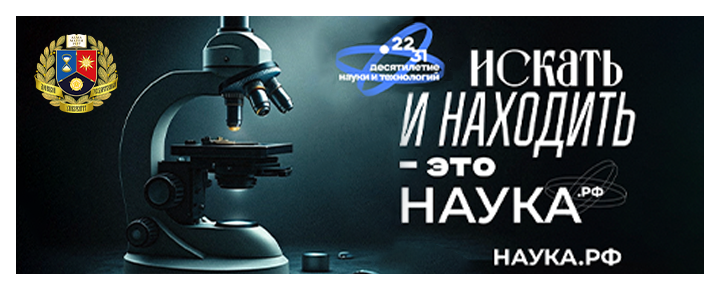RULES FOR AUTHORS
1. Previously unpublished scientific papers containing new research results in the field of history, philosophy, pedagogy are accepted for publication in the journal “Bulletin of Donetsk National University. Serie B: Humanities”. Articles submitted for publication in other journals are not accepted for consideration. The decision on publication is made by the editorial board of the journal after reviewing, taking into account the scientific significance and relevance of the submitted materials. Writings that do not meet editorial requirements and articles that do not correspond to the subject of the journal are not accepted for consideration. If the review is positive, but contains comments and suggestions, the editorial board sends the articles to the authors for revision together with the comments of the reviewer. The author must answer the reviewer on all points of the review. After such revision, the editorial board decides on the publication of the article. In case of rejection of the article, the editorial board sends the authors either reviews or excerpts from them, or a reasoned mail from the editor. The editorial Board does not enter into a discussion with the authors of rejected articles, except in cases of obvious misunderstanding. Writings are not returned to the authors. An article delayed for more than three months or requiring re-processing is considered as newly received. The editorial board reserves the right to carry out editorial editing of writings. The proofreading of the articles is not sent to the authors.
2. The writing is submitted in one copy (in Russian or English) printed on one side of an A4 sheet of paper (the copy is signed by the authors). The volume of writing, as a rule, should not exceed 15,000 - 20,000 characters, including figures, tables, list of references. The pages of the writing should be numbered sequentially. In parallel with the writing, the full text of the article (in WORD format, Office 97-2010) is sent in an attachment to the address of the editorial board (razumnyi.vitalii@yandex.ru ). If it is impossible to send the writing to the editorial board, the full text of the article in pdf format is sent to the editorial office's email address. The main text of the article is Times New Roman font, size 12 pt., with width alignment; Summary, references, tables, captions - Times New Roman font, size 10 pt. The text is typed without automatic hyphenation. The margins are mirrored: top - 20 mm, bottom - 25 mm, left - 30 mm, right - 20 mm. The line spacing is single. Paragraph indentation — 1 cm.
3. The text of the writing should correspond to the following structural scheme:
- UDC index is in the upper left corner of the page (without paragraph indentation).
- THE TITLE of the article is bold, centered (in capital letters without hyphenation);
- The following is written through the line: copyright ©, year, initials and surname of the authors: bold, italics, left alignment without paragraph indentation.
- The following is written through the line: an abstract in Russian (10 size) with up to 500 printed characters (with spaces), which should briefly reflect the goals and objectives of the study, as well as its main results. Keywords (3-5 words).
Sample design of the beginning of the article
UDC 811.161.1’373.611
VERB CONSTRUCTIONS WITH A PREPOSITION UNDER WITH A COMPARATIVELY-LIKENING MEANING
© 2016. Petrov A. V.
The article analyzes verb constructions with the preposition under, which has a comparative-likening meaning. In verbal constructions, the components of the logical formula of comparison, their composition and lexical content are studied: attribution to animate or inanimate names, common or proper names, concrete or abstract, art or biofacts. Keywords: verbs with the meaning of similarity, verb constructions with the preposition under, the comparative value of the preposition under, the logical formula of comparison.
There is the text of the article through a line (12 point size), which includes the introduction, the main part and the conclusion.
Introduction: statement of the problem in general form and connection with the most important scientific and practical problems, a brief analysis of recent studies and publications, which the solution of this problem was started in and which the author relies on, highlighting the previously unsolved parts of the general problem, which the article is devoted to, formulation of the goal and objectives articles.
Main part: basic research materials with full justification of the scientific results obtained; as a rule, it contains the following structural elements: problem statement, solution method, analysis of results.
Conclusion: solution statement of the tasks set in the introduction, prospects for further research in this direction.
list of references (10 point size without indentation). The list of literary sources (LIST OF REFERENCES) is given by a general list at the end of the manuscript in the order of references in the text (and not in alphabetical order) in the original language in accordance with GOST 7.1-2003 “Bibliographic record. Bibliographic description "and GOST7.05-2008" Bibliographic reference ". The source link is given in square brackets. Links are allowed only to published works. It is necessary to include in the list as many fresh primary sources as possible on the issue under study (no more than three to four years ago). You should not limit yourself to citing works belonging to only one group of authors or research group. References to modern foreign publications are desirable.
The phrase LIST OF REFERENCES (Bold) is aligned to the left.
LIST OF REFERENCES
1. Arutyunova ND Metaphor and discourse / ND Arutyunova // Theory of metaphor: collection of articles. / Per. from English, French, German Spanish, Polish lang .; Entry. Art. and comp. ND Arutyunova. - M.: Nauka, 1990. - S. 5–33.
2. Belozerova E. V. Textual realizations of linguocultural concepts / E. V. Belozerova // Professional communication: problems of the humanities: [coll. scientific. tr.]. - Volgograd: VGSKhA, 2005. - Issue. 1. Philology, linguistics, linguodidactics. - S. 10-17.
3. Leontiev A. A. Psycholinguistic features of the language of the media [Electronic resource] / A. A. Leontyev. - Access mode: http: // genhis.philol.msu.ru/article_286.shtml (date of access: 10/25/2014).
4. Magera TS Text of a political poster: linguistic modeling (based on regional election posters): author. diss. ... Cand. philol. Sciences: spec. 02/10/01 "Russian language" / T. S. Magera. - Barnaul, 2005. -- 18 p.
5. Methodology for researching political discourse: [collection of articles. scientific. tr. / ed. Vasyutkina E. S.] - M.: Mysl, 2000. - 347 p.
The following is the text in English (10 point size):
article title (bold - center alignment),
the author(s) initials and surname (bold italic - justified alignment),
annotation, keywords (Key words: - bold italic) - justified alignment.
Sample
VERBAL CONSTRUCTIONS WITH THE PREPOSITION ʽUNDERʼ IN A COMPARATIVE-SIMILARITY MEANING
A.V. Petrov
The study examined the constructors that are formed on the model of "the verb with the meaning of similarity + preposition under with the meaning of comparative similarity + the noun in the Accusative case". An important procedure of the analysis is the registration of the lexical and lexical-grammatical filling of the logical components in the comparative construction with the verb, the verbal derivative or with the verbal form: their relatedness to animate or inanimate names, concrete or abstract names , generic names or proper names, artifacts or bio facts.
Key words: verbs with the meaning of similarity, verbal constructions with the preposition under, comparative similarity meaning of the preposition under, the logical formula of comparison.
At the end of the article, the following information about the authors must be indicated (10 point size, bold, justified): surname, name, patronymic of all authors in full (in Russian and English); academic degree and title (in Russian and English); the full name of the organization - the place of work of each author in the nominative case, country, city (in Russian and English); position; each author's email.
Sample
Petrov Alexander Vladimirovich.
Doctor of Philology, Professor.
Taurida Academy of the Crimean Federal University named after V.I. Vernadsky.
Head of the Department of Russian, Slavic and General Linguistics of the Faculty of Slavic Philology and Journalism.
E-mail: liza_nada@mail.ru
Petrov Alexandr Vladimirovich
Doctor of Philology, Professor
Taurida Academy of Crimean Federal University named after V. I. Vernadsky
Head of Russian, Slavic and General Linguistics Department
E-mail: liza_nada@mail.ru
4. A separate file contains information about the authors (surname, first name, patronymic, academic degree, academic title, place of work, position, postal address, phone number, E-mail) - for the author's card index "Vestnik".
5. The surname and initials of the author, as well as the title of the article in Russian and English, should be submitted in a separate file and on a separate sheet.
In this case, the author's surname and initials are typed through a continuous space and with a sparse letter spacing (3 pt).
Sample
Petrov A.V. Verbal constructions with the preposition ʽunderʼ in a comparative-similarity meaning.
6. Postgraduate students and applicants, together with the article, submit a review of the scientific adviser.
7. Authors of scientific articles are personally responsible for the presence of elements of plagiarism in the texts of articles, including for the completeness and reliability of the stated facts and provisions.
8. Payment from the authors for the publication of articles is not charged.
9. Contact information:
83001, Donetsk, Gurov Ave., 14, Department of Philosophy (room 509, 510).
Managing editor: Emel'yanova Natal'ya Nikolaevna, Doctor of Philosophical Sciences, Professor, Professor at the Department of Philosophy of Donetsk State University (e-mail: emeljanova.n.n@bk.ru).
Executive Secretary: Razumny Vitaliy Vitalyevich, Candidate of Historical Sciences, Associate Professor, Associate Professor of the Department of World History of Donetsk National University (e-mail: razumnyi.vitalii@yandex.ru).

